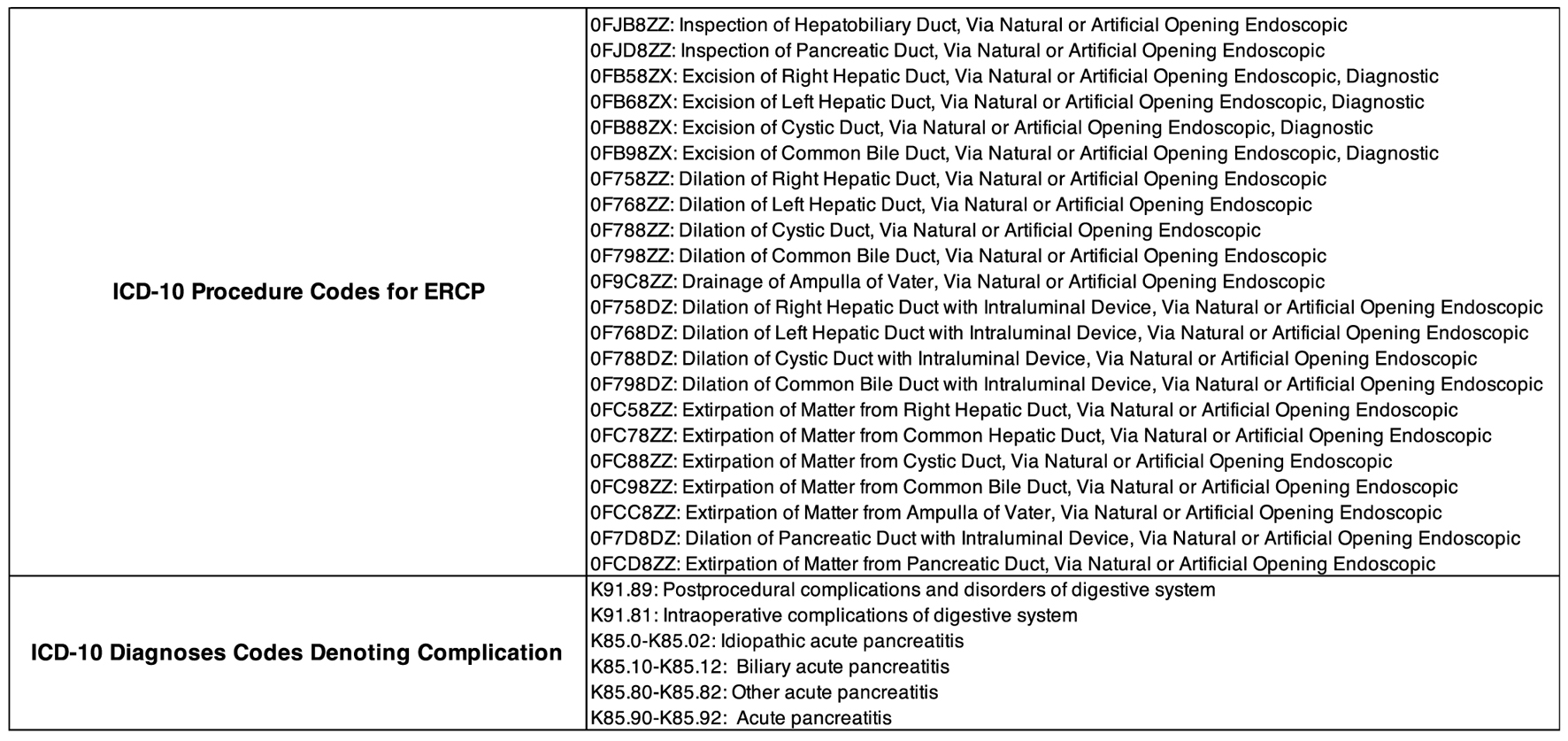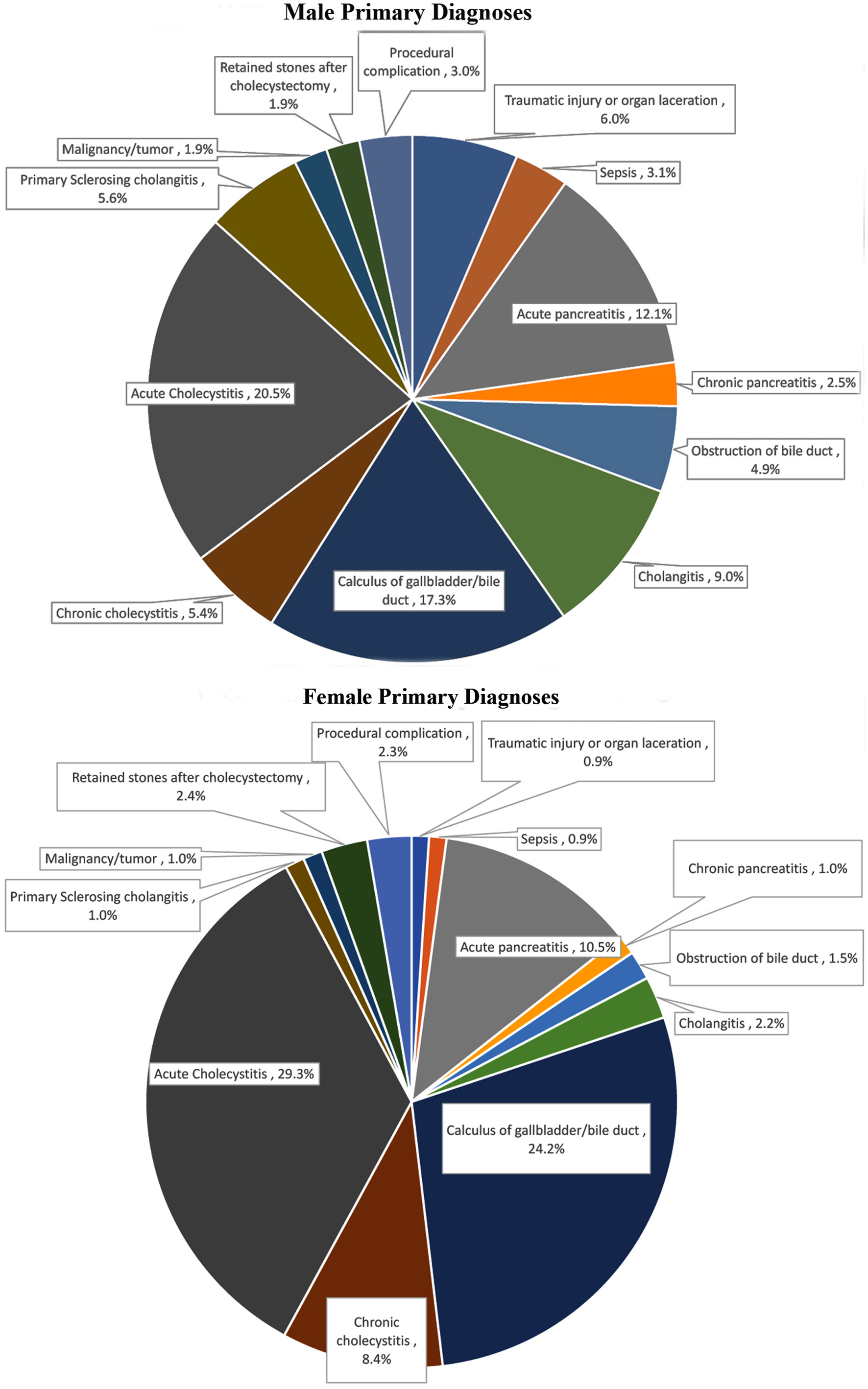
Figure 1. ICD10 procedure codes used to identify an ERCP during a hospitalization. Presenting diagnoses are provided by the KID for each individual hospitalization. Also shown are the codes used to define complication associated with performed ERCP. *A diagnosis code for pancreatitis was captured as a complication if the diagnosis code was entered within 24 h of the documented ERCP. ERCP: endoscopic retrograde cholangiopancreatography; KID: Kids’ Inpatient Database.
